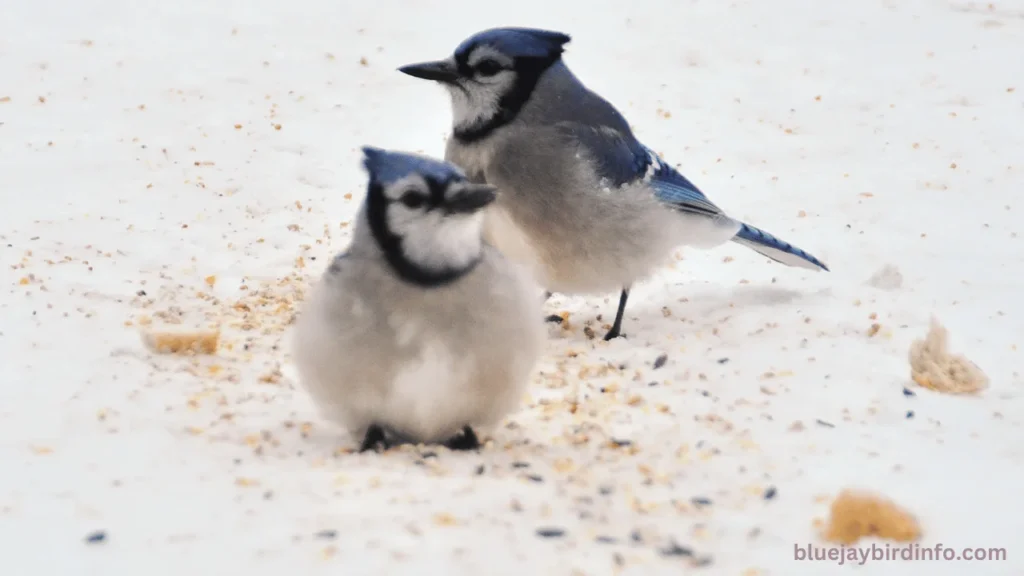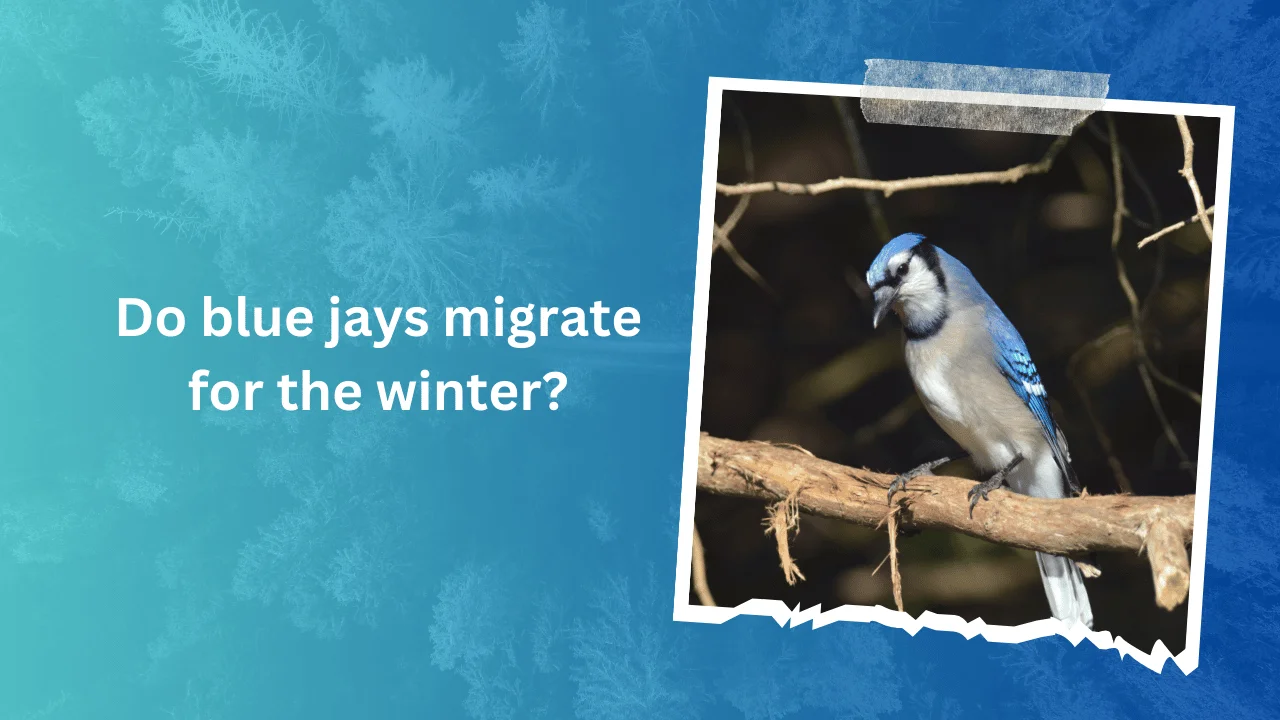As autumn’s chill settles in and trees shed their leaves, many birds take to the skies, embarking on long journeys south.
Blue jays, however, don’t follow the same predictable migratory path as other species, leaving people to wonder—do they migrate, stay, or do a bit of both? This question has puzzled bird watchers and scientists alike, as blue jays exhibit a mysterious movement pattern that defies the traditional understanding of migration.
With their bright feathers and loud calls, blue jays might be spotted across neighborhoods one season, then vanish the next. What makes them so different, and what exactly dictates their migration decisions?
Blue jays are more than just a beautiful sight; they play a key role in maintaining balance in our ecosystems. From scattering seeds to controlling insect populations, these birds contribute to the health of forests and suburban landscapes.
Their seasonal presence—or absence—can have an impact that ripples through the environment, affecting everything from plant growth to the behavior of other animals. But unlike many birds with rigid migration schedules, blue jays’ seasonal movements are far from straightforward, challenging our assumptions about migratory behavior.
This article dives into the fascinating world of blue jay migration, exploring why some choose to stay and brave the cold winters while others decide to seek warmer climates. By looking at the latest research on habitat, food sources, and climate impact, we uncover what really drives the blue jays’ unique behavior.
Read on to find out if those vibrant flashes of blue will be gracing your backyard this winter or if they’re off exploring other skies.
Contents
- 1 Blue Jay Migration Patterns
- 2 Habitat and Food Availability
- 3 Geographic Variation
- 4 Individual Variation
- 5 Conservation Implications
- 6 Conclusion
- 7 FAQ’s
- 7.1 Do all blue jays migrate during the winter?
- 7.2 What factors influence whether a blue jay will migrate?
- 7.3 Are blue jays considered migratory or resident birds?
- 7.4 How does climate change impact blue jay migration?
- 7.5 What role does food availability play in blue jay migration?
- 7.6 Do male and female blue jays migrate differently?
Blue Jay Migration Patterns
Blue jay migration is a fascinating study in flexibility and unpredictability. Unlike birds that follow fixed migratory routes, blue jays exhibit a mixed migration pattern—meaning that some individuals migrate while others remain in their habitats year-round.
Typically found across eastern and central North America, blue jays inhabit regions from the southern United States up through Canada. During winter, many of them remain in the northern part of their range, but some travel southward, particularly when food sources dwindle.
However, even this movement is not consistent, as one year’s population might migrate, while the next year’s may stay put, creating a dynamic presence across various regions.
In parts of their range, blue jays are considered resident birds, especially in areas with a stable, ample food supply.
These regions often have milder winters or an abundance of oak trees and other nut-bearing vegetation that provide food throughout the colder months. By contrast, in harsher climates or areas where food sources are less predictable, they may act as migratory birds, heading to warmer regions to ensure survival.
This combination of migratory and resident tendencies is unique to blue jays and highlights how they adapt to their immediate environment rather than following an instinctive migration schedule.
Several factors influence a blue jay’s decision to migrate, such as food availability, temperature, and day length. For example, in years with plentiful acorn supplies, more blue jays are likely to remain in northern habitats because they can count on a steady food source.
Colder temperatures and shorter daylight hours can also trigger migratory behavior, but these triggers are complex and don’t operate in the same way for every blue jay. Each bird seems to make a decision based on a blend of environmental cues and individual needs, making blue jay migration a curious mix of choice and survival strategy.
Habitat and Food Availability
Habitat conditions and food availability play a major role in determining whether blue jays migrate or remain in their territories during winter. Blue jays are highly adaptable, but their decision to migrate often hinges on the presence of their preferred foods, such as acorns, nuts, and seeds.
When these food sources are plentiful, blue jays are more likely to stay put, braving the colder months rather than expending energy on long flights. However, in years when food is scarce, particularly in northern regions, migration becomes a necessity, as they seek areas with better access to resources.
Changes in habitat, such as deforestation or urban expansion, can disrupt the natural food sources and nesting sites blue jays rely on, which may increase their likelihood of migrating.

Additionally, unpredictable climate patterns can alter the availability and timing of food resources, leading to shifts in migration behaviors. For instance, a warm autumn may extend the blue jays’ stay in northern areas, while an early winter could prompt an earlier departure.
The more their natural habitat changes, the more flexible and responsive blue jays need to become to survive.
Climate change has also started to impact blue jay migration in significant ways. Warmer temperatures and shifting weather patterns mean that blue jays may not need to migrate as far, or at all, if food sources remain accessible.
However, climate change can also lead to unpredictable food scarcities, such as acorn shortages, forcing blue jays to travel farther or find new regions to settle temporarily. These shifts underscore the blue jays’ adaptability, yet they also hint at how rapid environmental changes might challenge this resourceful species in the years to come.
Geographic Variation
Geographic variation plays a significant role in the migration patterns of blue jays, with factors like latitude, altitude, and proximity to water bodies influencing how, when, and even if these birds migrate.
For example, blue jays found in northern latitudes, such as in Canada or the northeastern United States, are more likely to migrate southward during the winter months to escape harsher climates. Meanwhile, blue jays in the southern United States, where winters are milder, often remain in place year-round.
Altitude also plays a part—blue jays residing in higher elevations may migrate to lower, warmer areas during winter to avoid the colder conditions at elevation.
The timing and distance of migration vary greatly based on these geographic factors. Those living near large water bodies, for instance, may have access to unique food sources and microclimates that can make local environments more hospitable, reducing the need for migration.
Blue jays in coastal regions may even follow different migratory paths or timelines, taking advantage of the mild, humid winters. This geographic flexibility in their behavior allows blue jays to adjust to their immediate surroundings and access resources without undertaking the long migrations seen in other bird species.
Such regional differences suggest that blue jays are highly adaptable to their specific environments. Populations in colder, more seasonal climates develop a greater tendency toward migration, while those in warmer, stable climates are more likely to remain in their territories.
This flexibility highlights blue jays as a model for studying regional adaptation in migratory birds and underscores how environmental conditions shape migratory behaviors across different populations.
Individual Variation
Individual variation among blue jays adds yet another layer of complexity to their migration patterns. Not every blue jay follows the same seasonal path, and factors like age, sex, and experience can significantly influence their decision to migrate.
Younger blue jays, for example, are often more likely to migrate than older, experienced individuals who may have adapted to wintering in one location and can better handle cold conditions.
Sex-based differences in migration patterns are still being studied, but some research suggests that females might be slightly more inclined to migrate than males, likely due to differences in energy needs or territorial behavior.
Experience also plays a critical role. Blue jays that have survived harsh winters before may be more likely to stay in a familiar area where they know food sources and shelter options, while younger, less experienced jays may take the safer route of migration.
This adaptability showcases the importance of learning and survival skills in shaping migratory behavior. Unlike species with fixed migration patterns, blue jays seem to make individualized decisions based on their past experiences and survival strategies.
Genetics and inherited traits could also contribute to the variability seen in blue jay migration. Some researchers believe that migratory behavior may be partly genetically influenced, with certain populations or family lines displaying a stronger inclination toward migration.
This blend of inherited traits and individual choice gives blue jays a fascinating flexibility, making them a compelling example of how genetics and environmental adaptability interact in migratory species.
Conservation Implications
The unique migration patterns of blue jays have important conservation implications, as they are sensitive to environmental changes that affect both resident and migratory populations.
Because blue jays rely on a mix of seasonal habitats and food sources, factors like habitat loss, climate change, and urban expansion can disrupt their migratory behavior and, ultimately, their survival. Deforestation and the loss of nut-bearing trees, for example, reduce critical food supplies, leading to increased stress and the need for blue jays to travel farther in search of sustenance.
As climate change continues to alter weather patterns and temperature norms, blue jays are facing more unpredictable food availability, forcing them to adapt or relocate to survive.
These environmental shifts can have a ripple effect on blue jay populations and may impact their role within ecosystems, especially since they are known for spreading seeds that help sustain forests.
Protecting blue jay habitats requires a targeted approach that includes preserving forests with diverse tree species, as well as implementing urban green spaces that can support blue jays and other wildlife. Conservation efforts should also focus on mitigating climate change to maintain stable seasonal cycles that blue jays and other migratory birds depend on.
Effective conservation strategies for blue jays should prioritize both their migratory and resident habitats, with an emphasis on protecting regions that serve as critical wintering grounds or migratory stopovers.
By promoting awareness and supporting habitat restoration projects, we can help safeguard the delicate balance blue jays maintain with their environment, ensuring that future generations will continue to enjoy their presence across North America.

Conclusion
In summary, the migration patterns of blue jays reveal a fascinating blend of adaptability and unpredictability. Unlike many birds with rigid migratory schedules, blue jays display a mix of migratory and resident behaviors influenced by factors such as food availability, habitat conditions, and geographic location.
Additionally, individual traits like age, experience, and even genetics play roles in their migration decisions, while climate change and habitat loss further impact their movements and survival. These insights highlight the importance of blue jays not just as beautiful birds but as key players in ecosystem health, with their seasonal movements contributing to seed dispersal and ecological balance.
Understanding blue jay migration is crucial for appreciating their ecological role and ensuring their conservation. By gaining insight into these unique migration patterns, we can better protect the habitats that sustain blue jay populations and anticipate how environmental changes may affect them.
These efforts underscore the need for proactive conservation strategies to maintain their habitats and, by extension, the ecosystems they help support.
If you’re intrigued by blue jays, consider joining citizen science projects that track migratory birds or conduct your own seasonal observations in your backyard.
Every sighting adds to our collective knowledge, helping researchers monitor changes in blue jay migration and contribute to conservation efforts. Together, we can play a part in understanding and preserving these iconic birds for future generations.
Also read other articles regarding Blue Jay Nesting!
FAQ’s
Do all blue jays migrate during the winter?
No, blue jay migration patterns are mixed; some migrate while others remain in their habitats year-round.
What factors influence whether a blue jay will migrate?
Key factors include food availability, temperature, and day length as well as individual traits like age and experience.
Are blue jays considered migratory or resident birds?
Blue jays can be both, depending on their region. Northern populations are more likely to migrate, while southern populations often stay year-round.
How does climate change impact blue jay migration?
Climate change affects blue jay migration by altering food availability and seasonal weather patterns, which can disrupt their movement.
What role does food availability play in blue jay migration?
Blue jays are more likely to migrate if food sources like acorns and nuts are scarce in their habitats.
Do male and female blue jays migrate differently?
Research suggests there may be slight sex-based differences in migration, with females potentially more inclined to migrate.








